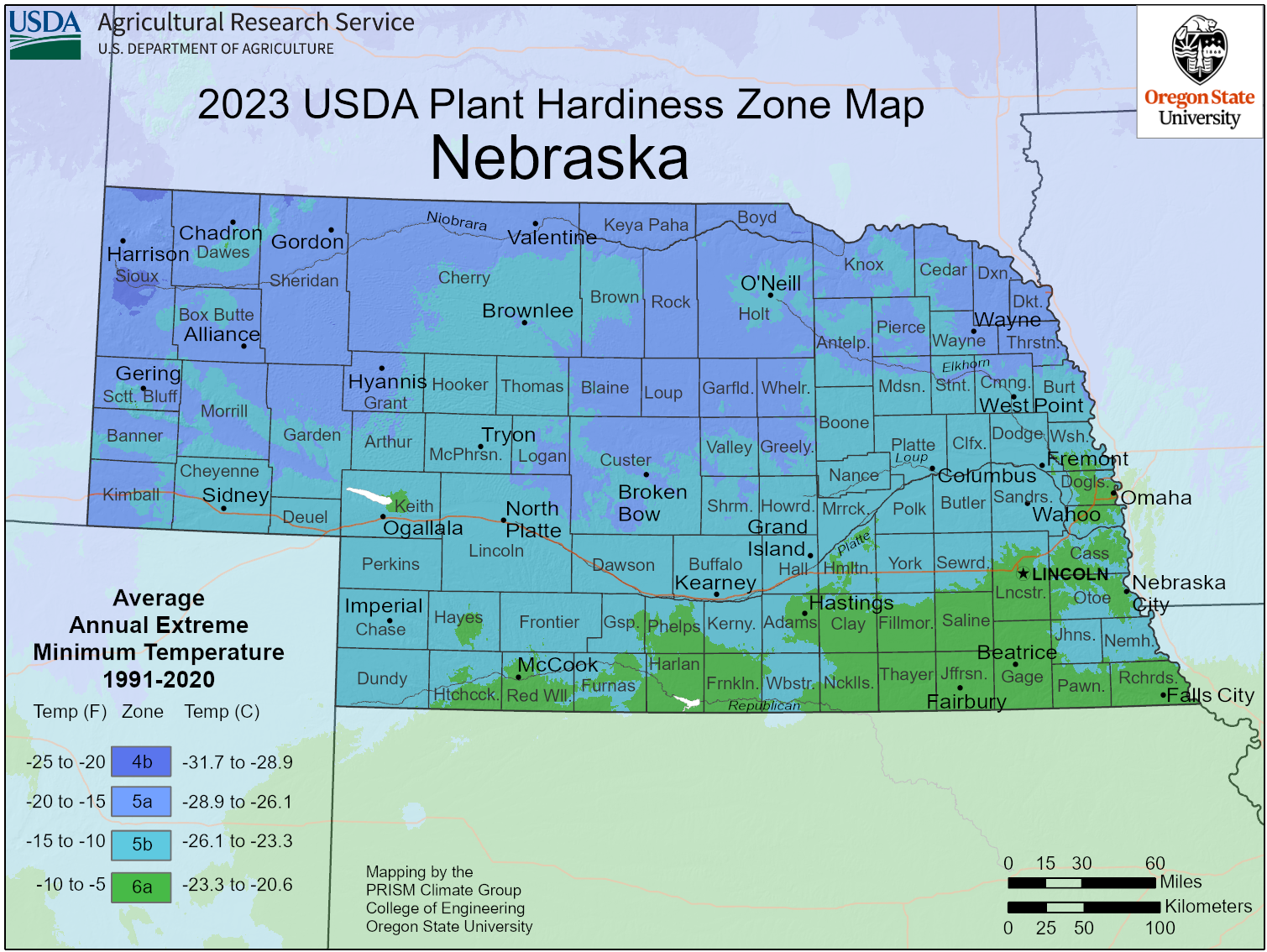![]()
By Chabella Guzman, communications specialist

Nebraskans are a pretty hardy lot, and so too are their plants. With the new U.S. Department of Agriculture (USDA) “Hardiness Zone Map,” most of Nebraska remains in a 5 zone, with its most southern regions moving into a zone six.
The map does not indicate “Climate Change,” as some might think. The USDA was able to pull information from 13,412 weather stations this time, while in 2012, for the last map, it used information from 7,983 stations. “It is a more refined picture, so we are able to scale down a little bit more. Each zone is separated by a ten-degree difference,” said Emily Stine, Nebraska Extension Educator.
The more detailed information brought the Nebraska Panhandle to a solid 5a and b, with “A” being coldest at minus 20 degrees. Before, it was a 4b and 5a, so the impact is a warming of 5 degrees. Stine said this will not impact plants much, as those temperatures are still way below freezing.
“This average extreme minimum winter temperature is the average coldest. So, we may be able to incorporate some plants into our landscapes that we haven’t before, but for our region, nothing has really changed,” she said.
On a bigger scale across Nebraska or even the U.S., the changes in cold temperatures could affect pest and weed management. Insects could overwinter and survive into the next year as it’s not as cold.
Again, with plant selection choosing annuals or perennials does not guarantee the plant will live. The zones are averages, and the Panhandle may not experience -20 degrees, or it could hit -40 degrees. “It (Map) is a tool, a lot of times, plants have tags with a hardiness of 5, and I feel comfortable planting it, whereas with plants for warmer zones, I’ll treat it more like an annual,” Stine said.
A plant’s hardiness can be affected by so many aspects beyond temperature, from moisture to wind and humidity. It also doesn’t include the heat tolerance of a plant or growing days, which are based on hours and not days.
“It is a very good tool, but only one of many tools a gardener should consider when planting,” said Stine.
